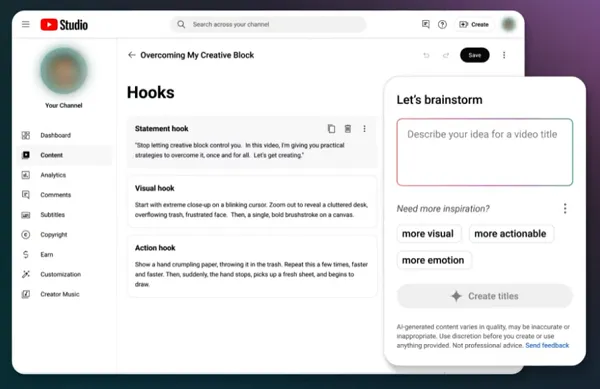Early career leadership is daunting. There’s still a vast amount to learn, and at the same time, leaders are still establishing their own identity and growing an awareness of their own strengths and weaknesses. Imposter syndrome is on the rise, and those in more senior positions are more likely to be affected by it. At this pivotal stage, there is a great opportunity for young leaders to learn from those who are more experienced. In this post we look at what characterizes younger leaders, and the types of support that their managers can offer.
While the traits associated with great leadership may be relatively consistent, the business environment is demanding that specific leadership requirements need to be honed and elevated above others. To understand where today’s young leaders excel and where they struggle, we analyzed RHR’s data on 840 high potential leaders aged 21 to 39 years between 2018 and 2023.
This is what we found.
Where young leaders excel
Leading the future
Younger leaders have a willingness to push for improvement, to lead change and innovation, and focus on the long-term. Traits which are all much-needed in today’s fast-moving and fluid work environment. This cohort of leaders is very much willing to put a stake in the ground and plan for the future, a characteristic which is aligned to the culture of connecting with a sense of purpose and belonging that employees now expect.
Reasoning with agility
Younger leaders are adept at working in complex situations and dealing with uncertainty; the events of the last three years have tested and proven many young leaders in this sense. This group values progress, diversity and autonomy more than older cohorts, suggesting they are well-equipped for hybrid work and leading in a remote environment. They are also more likely to challenge established procedures and appreciate diverse worldviews – their inquisitive nature and willingness to proactively fill gaps in their knowledge further adds to their strengths.
Where young leaders need support
Creating shared values
As a group, young leaders show willingness to set a strategic vision and values, but struggle to translate it into setting the tone in terms of decision-making, behaviors and interactions. While their outwardly collaborative and cooperative demeanor may help them to get buy-in, they may fail to turn their vision into reality. At their worst, young leaders become frustrated when they feel they are not being listened to or that others are trying to derail their agenda.
Thriving in high stakes
Performing with stamina and consistency under intense pressure and pace is something with which the younger leadership population struggles. This may come as a surprise given the demands of today’s leadership roles, but dealing with a high level of scrutiny and owning ultimate responsibility for outcomes is an area where our data shows younger leaders struggle.
Trust and cynicism
While young leaders are insightful and skilled at analyzing others’ motives and intentions, they can be cynical and prone to doubting the intentions of others, and trust must be proven to them. This, in turn, can mean they are cautious as leaders, and struggle to make quick decisions (or will make low-risk decisions), being overly concerned about criticism or making a mistake. Young leaders may also lack belief in others, and be reticent to lean on people to help them through difficult times, which may lead them feeling an unnecessary burden of stress.
How today’s leaders can support the leaders of tomorrow
Organizational leaders have always had to adapt their leadership to new market conditions, but our perspective is that these changes are much bigger and faster than they used to be. Therefore, more senior leaders can play a powerful role in shaping the next generation by:
1. Improving psychological safety: A psychologically safe work environment is important to younger leaders and to their development. Senior leaders should offer up space, time and demonstrate a strong link back to vision and culture to create an environment where stress is normalized, where help is abundant and where mistakes are expected to be made.
2. Articulating the ‘why’: More so than other groups, young leaders want to know the ’why’, so it’s important for them to understand company purpose and to identify their own purpose too. Establishing their ‘why’ will help them develop alignment, connectivity and inclusivity that creates a high performing and culturally strong team.
3. Presenting the right opportunities: If senior leaders know that younger leaders in their teams tend to be more cautious or reticent to make decisions, they can work to find stretch assignments where young leaders are required to invite a bit more risk and speak up a bit more. For example, have a junior leader present to an internal client like the executive board with the backup of the senior leader.
Providing support, based on the characteristics of each young leader, will not only help them to grow, it will also have the added benefit of making them less likely to revert to derailing behaviors. Instead, their enthusiasm, initiative, and flexibility will be able to shine through and their self-doubt will be minimized, enabling them to capitalize on their strengths and step up to the next accomplishment in their career journey.
The post How Executives Can Help Young Leaders Shine appeared first on ChiefExecutive.net.







































![Spider-Man Is Back in Black With the Green Goblin in New Funko Pop! Figures [Exclusive] Spider-Man Is Back in Black With the Green Goblin in New Funko Pop! Figures [Exclusive]](https://static1.colliderimages.com/wordpress/wp-content/uploads/2025/03/spider-man-the-animated-series-green-goblin.jpg)































